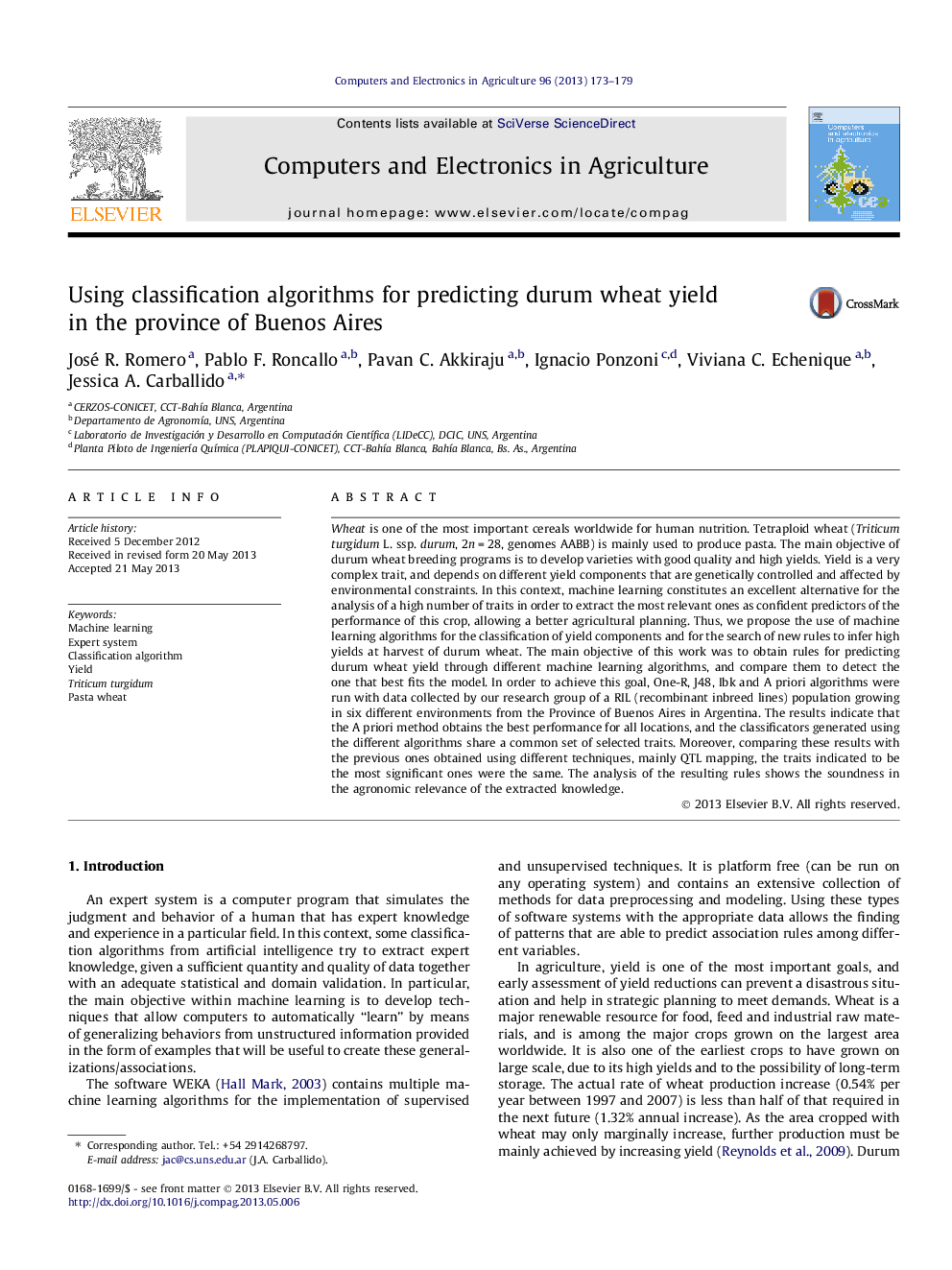| کد مقاله | کد نشریه | سال انتشار | مقاله انگلیسی | نسخه تمام متن |
|---|---|---|---|---|
| 84390 | 158879 | 2013 | 7 صفحه PDF | دانلود رایگان |

• Several machine learning algorithms for the classification of yield components were compared.
• Rules to infer yields at harvest of durum wheat with data from Buenos Aires Province were found it.
• A priori method obtains the best performance for all locations.
• More relevant traits for yield levels prediction were identified.
• Thousand grain weight is the most relevant trait for predicting durum wheat yield.
Wheat is one of the most important cereals worldwide for human nutrition. Tetraploid wheat (Triticum turgidum L. ssp. durum, 2n = 28, genomes AABB) is mainly used to produce pasta. The main objective of durum wheat breeding programs is to develop varieties with good quality and high yields. Yield is a very complex trait, and depends on different yield components that are genetically controlled and affected by environmental constraints. In this context, machine learning constitutes an excellent alternative for the analysis of a high number of traits in order to extract the most relevant ones as confident predictors of the performance of this crop, allowing a better agricultural planning. Thus, we propose the use of machine learning algorithms for the classification of yield components and for the search of new rules to infer high yields at harvest of durum wheat. The main objective of this work was to obtain rules for predicting durum wheat yield through different machine learning algorithms, and compare them to detect the one that best fits the model. In order to achieve this goal, One-R, J48, Ibk and A priori algorithms were run with data collected by our research group of a RIL (recombinant inbreed lines) population growing in six different environments from the Province of Buenos Aires in Argentina. The results indicate that the A priori method obtains the best performance for all locations, and the classificators generated using the different algorithms share a common set of selected traits. Moreover, comparing these results with the previous ones obtained using different techniques, mainly QTL mapping, the traits indicated to be the most significant ones were the same. The analysis of the resulting rules shows the soundness in the agronomic relevance of the extracted knowledge.
Journal: Computers and Electronics in Agriculture - Volume 96, August 2013, Pages 173–179